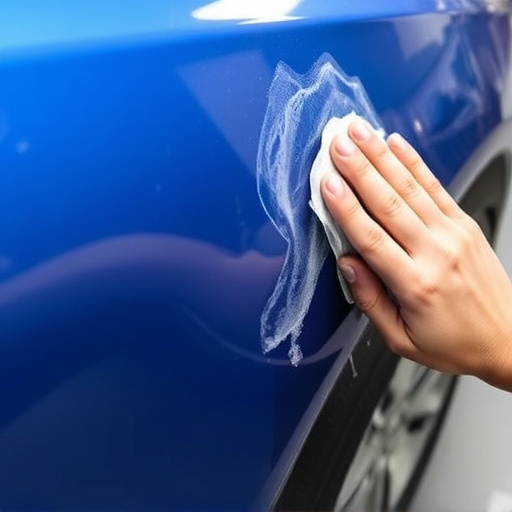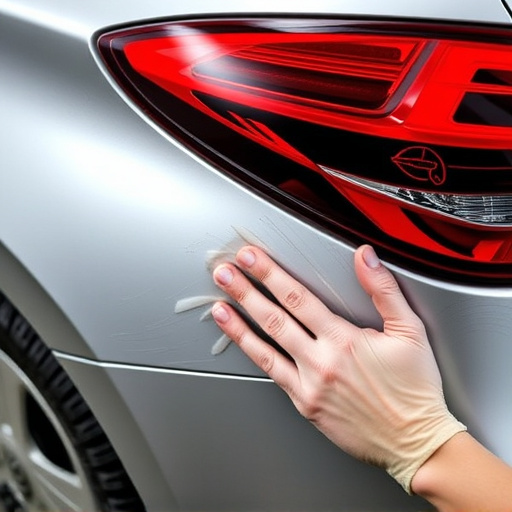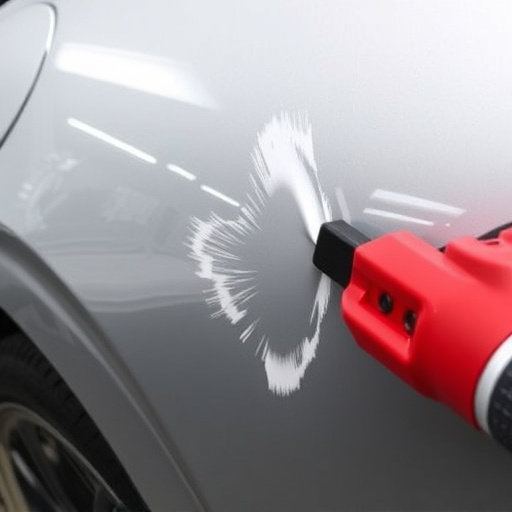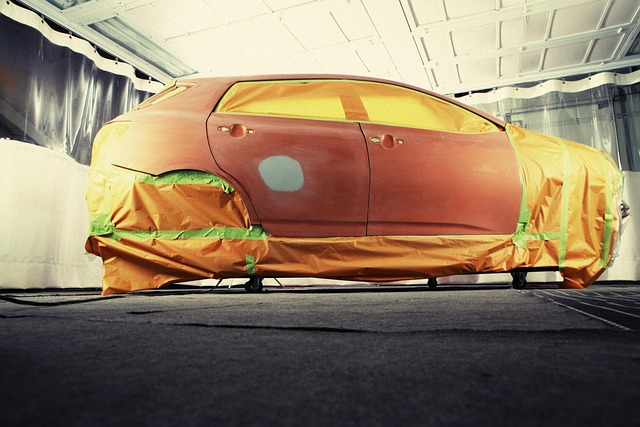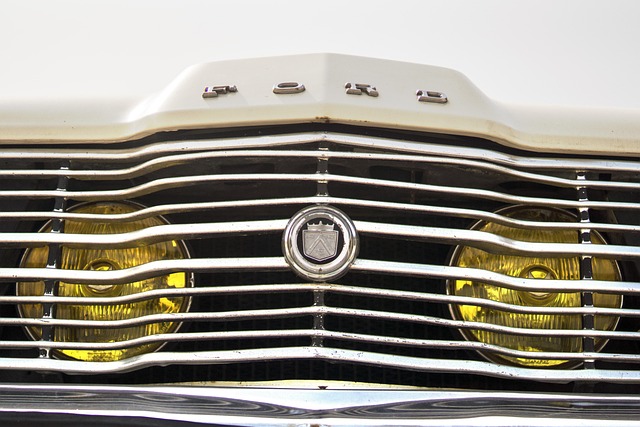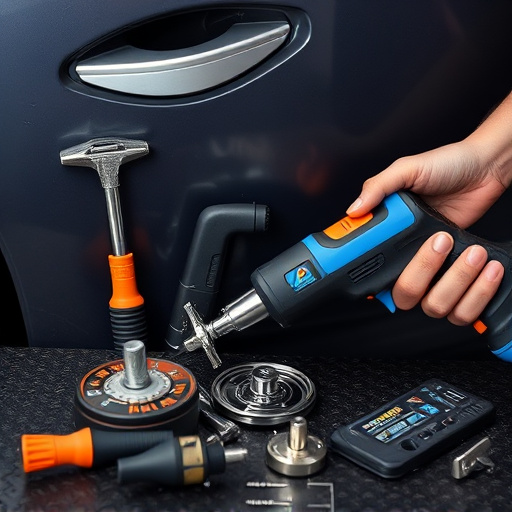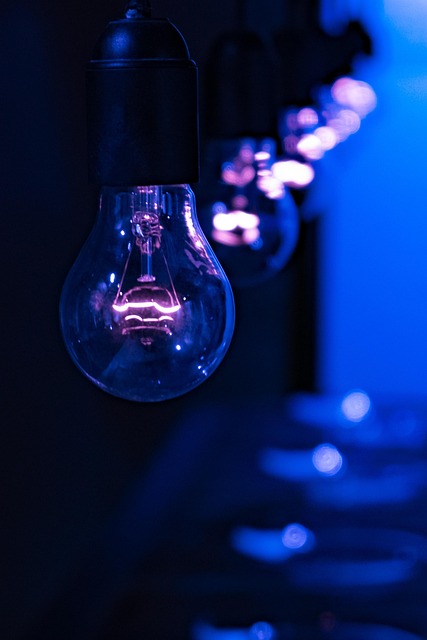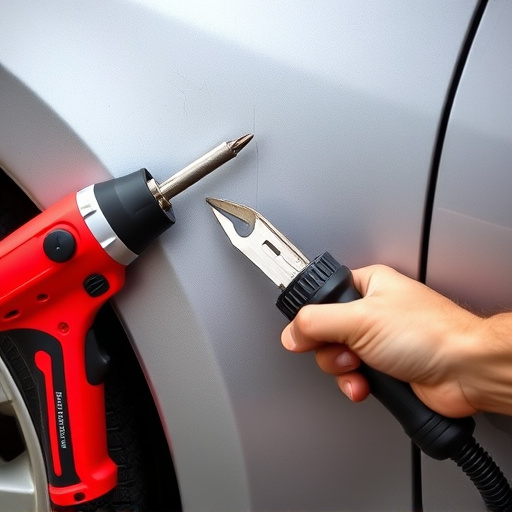UV curing systems have revolutionized industries by swiftly hardening adhesives, coatings, and inks using ultraviolet light, outpacing traditional drying methods. In automotive repair, this technology speeds up processes like fender repair and Mercedes-Benz repairs while maintaining quality. Versatile across printing, coating, adhesives, and medical devices, UV curing enhances painting efficiency with thin, durable coats. As an energy-efficient alternative to heating, it's environmentally friendly. Future prospects include faster curing times in automotive repair, reduced energy consumption, and tailored UV solutions for specific applications, driving efficiency gains across sectors.
“Unleashing the Potential of UV Curing Systems: The Future is Bright In this comprehensive guide, we explore the cutting-edge advancements in UV curing technology. From understanding its fundamental principles to delving into diverse applications, we uncover how UV curing systems revolutionize industries globally. Discover the compelling advantages that make it an indispensable choice for various sectors. Furthermore, our insights into emerging trends promise exciting innovations ahead, shaping the future of materials processing.”
- Understanding UV Curing Technology: A Deep Dive
- Applications and Advantages of UV Curing Systems
- Future Trends and Innovations in UV Curing Technology
Understanding UV Curing Technology: A Deep Dive

UV curing systems have revolutionized many industries, including automotive repair and car body restoration. This cutting-edge technology harnesses the power of ultraviolet light to swiftly and accurately cure adhesives, coatings, and inks. By focusing intense UV radiation on specific areas, these systems offer a precise and efficient solution compared to traditional drying methods.
The process involves irradiating a material with UV light, which breaks down molecular bonds within the substance, leading to rapid polymerization. This transforms the liquid or paste into a solid, providing a durable finish. In auto bodywork applications, UV curing is particularly beneficial for achieving fast drying times, superior bond strength, and reduced cure temperatures. It ensures that car body restoration processes are not only swift but also environmentally friendly due to lower energy consumption and minimal waste generation.
Applications and Advantages of UV Curing Systems

UV curing systems have revolutionized various industries, offering efficient and precise solutions for a multitude of applications. These systems utilize ultraviolet light to initiate a chemical reaction, leading to rapid hardening or curing of materials. One of the most notable advantages is their speed; UV curing can occur within seconds, significantly reducing production times compared to traditional drying methods. This makes them invaluable in time-sensitive processes like automotive repairs, particularly in high-volume auto body shops. For instance, fender repair and Mercedes-Benz repairs often benefit from UV curing systems, ensuring quick turnarounds without compromising quality.
The versatility of UV curing systems is another key advantage. They are employed across diverse sectors, including printing, coating, adhesives, and even medical devices. In auto body shops, these systems enhance the efficiency of painting processes by enabling the application of thin, high-performance coats, resulting in better durability and a more glossy finish. Moreover, UV curing reduces energy consumption compared to conventional heating methods, making it an eco-friendly choice for modern workshops.
Future Trends and Innovations in UV Curing Technology

The future of UV curing systems looks bright, with continuous innovations pushing the boundaries of what’s possible in various industries. One notable trend is the integration of UV technology into advanced auto body repair and car bodywork services. This includes the development of faster, more efficient curing processes, allowing for quicker turnaround times and reduced operational costs in auto glass repair and other vehicle maintenance procedures.
Additionally, researchers are exploring the potential of UV curing systems in sustainable practices. The ability to cure materials with minimal heat input reduces energy consumption, making it an attractive option for eco-conscious manufacturers. As technology advances, we can expect more precise UV curing solutions tailored to specific applications, further enhancing efficiency and versatility across sectors like printing, coatings, and even medical device manufacturing.
UV curing systems have already made significant strides in various industries, offering unparalleled speed, efficiency, and precision. As we look ahead, future trends promise even more advanced materials and applications, further revolutionizing manufacturing processes globally. By embracing these innovations, businesses can stay ahead of the curve, ensuring optimal performance, reduced waste, and enhanced sustainability.



